I tested Samsung's new top mini-LED 4K TV, and the Glare-Free screen tech makes a big difference
Samsung's Glare-Free empire expands
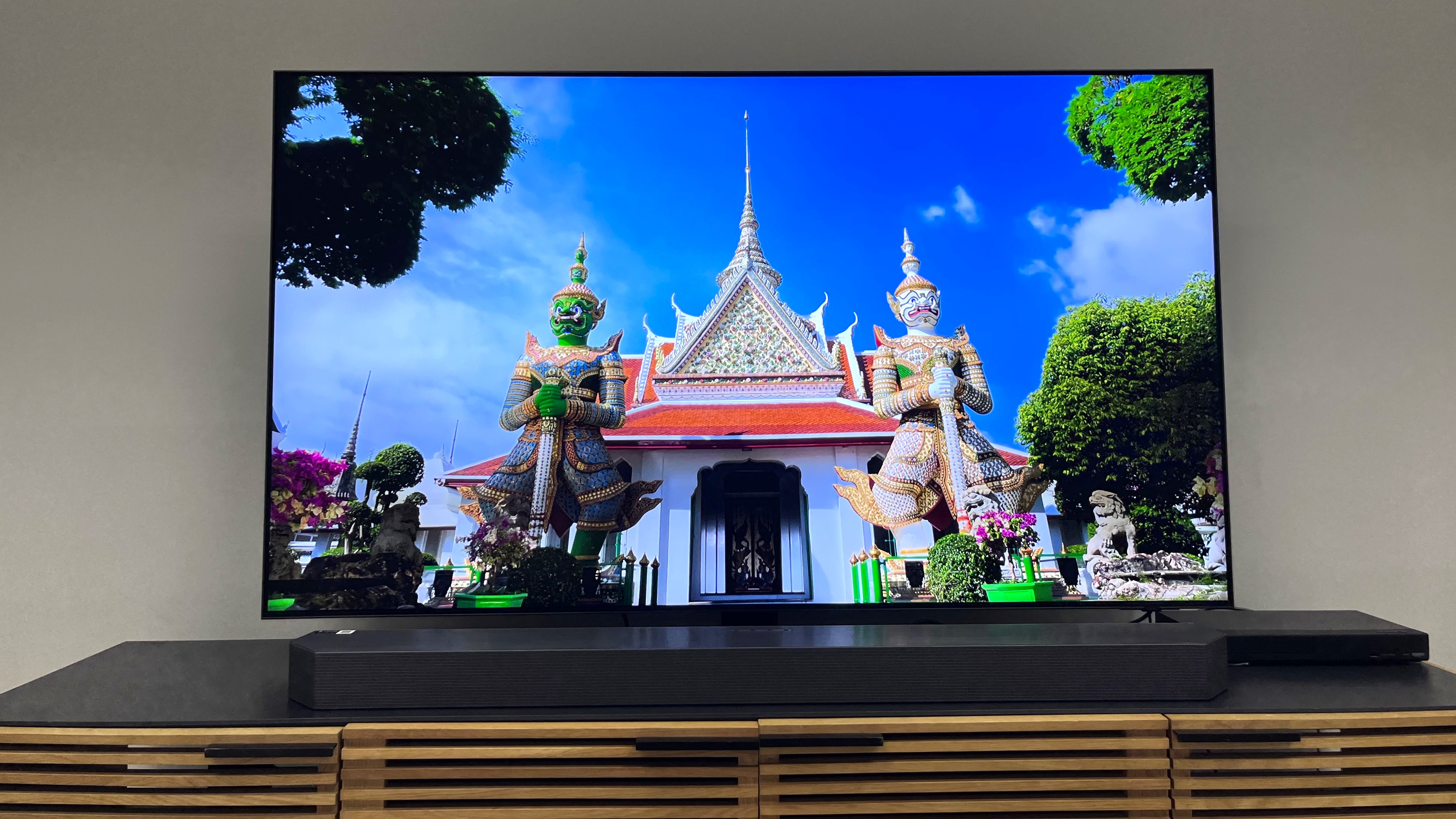
The Samsung QN90F is the company’s flagship 4K mini-LED TV series for 2025, and it carries the torch of its Samsung QN90D predecessor by delivering an incredibly bright picture.
But high brightness isn’t the only notable feature of the QN90F series – it also features Samsung’s Glare-Free screen tech, which has been ported from last year’s Samsung S95D OLED to a wider range of the company's TVs in 2025, including the 8K Samsung QN990F mini-LED.
The high brightness delivered by the Samsung QN90F is one feature that makes it great for daytime viewing, and it’s a capability that helped land the QN90F as the best for sports option in our best TVs guide.
But an anti-reflection screen coating is another thing that helps with daytime viewing, or viewing in rooms with bright overhead lights, so the new QN90F’s one-two punch of brightness and glare rejection should fully seal it as a perfect TV for sports.
Samsung recently invited me to its New Jersey testing facility to spend hands-on time with the QN90F and other new TVs, and I was able to take a full suite of measurements and also do some subjective viewing tests. I’ll dive into those details momentarily, but let’s first look at the wide range of features supported by the Samsung QN90F.
AI Upscaling Pro comes to 4K
The QN90F series offers screen sizes from 43 inches to 115 inches. This makes the QN90F Samsung’s most flexible TV when it comes to accommodating a range of screen size needs, and the 115-inch model is also the largest mini-LED TV Samsung makes.
Samsung's US pricing for the QN90F series ranges from $1,399 for the 43-inch model to $14,999 for the 98-inch model, with the 65-inch version I tested selling for $2,699. Happily, these prices are the same as last year's QN90D series at launch.
Get daily insight, inspiration and deals in your inbox
Sign up for breaking news, reviews, opinion, top tech deals, and more.
QN90F series sets come with the company’s upgraded NQ4 AI Gen3 processor along with AI Upscaling Pro, a new feature previously limited to the company’s 8K TVs. This brings with it an improved version of Auto HDR Remastering Pro, which applies HDR to regular high-definition, standard dynamic range programs, plus an AI-based color enhancer and depth-based stereoscopy enhancer feature.
The QN90F also has a new Clear Face Restoration feature that removes noise from faces in close-up shots without eliminating detail, and it gains the AI Motion Enhancer feature found in last year’s 8K flagship Samsung QN900D.
AI Motion Enhancer combines a ball-tracking algorithm with an onboard picture database to fill in any visual gaps of a ball (or puck) in motion when watching fast-action sports, and having reviewed the QN900D, I can confirm that it does that job incredibly well.
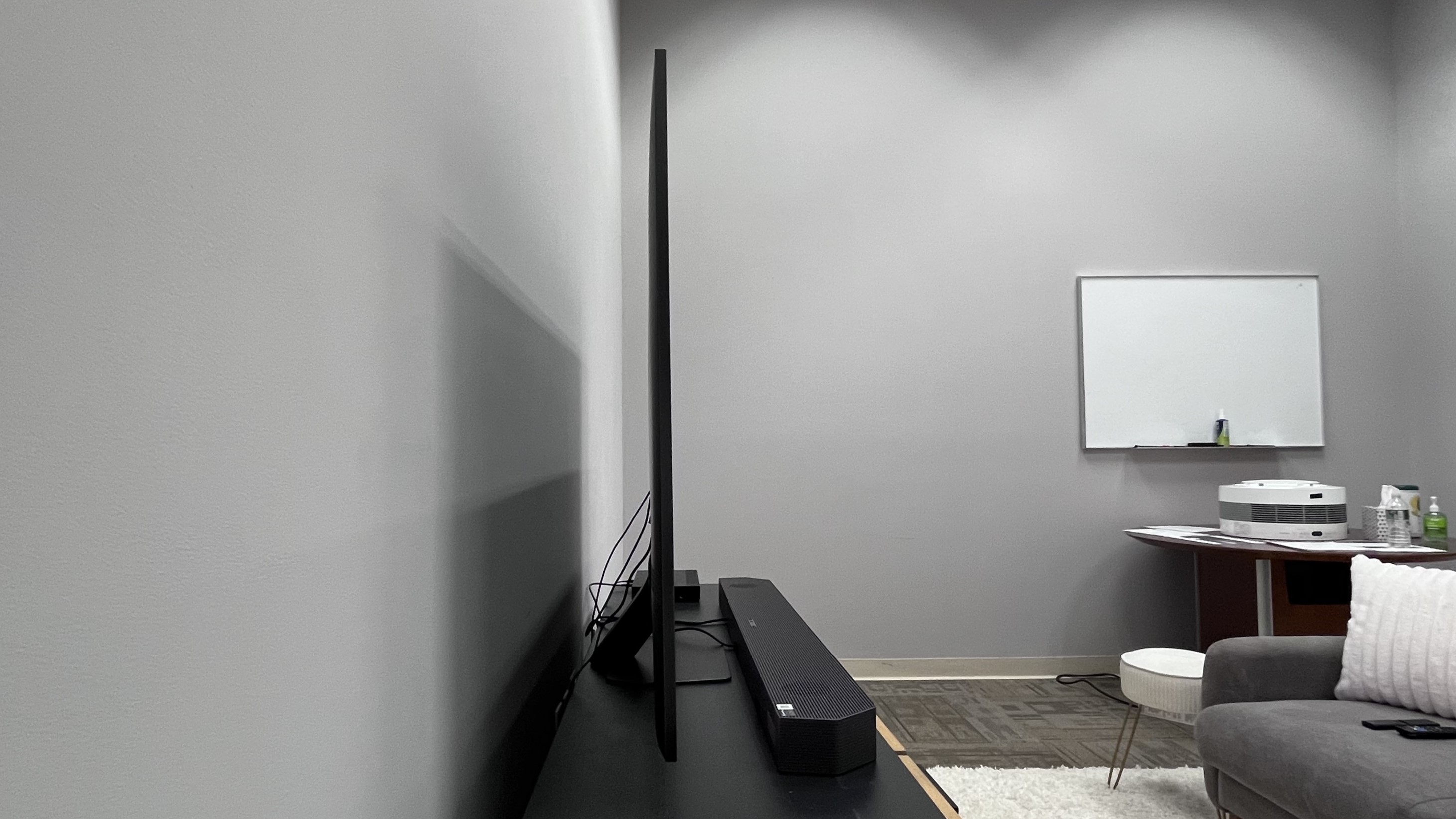
Other AI-based magic tricks performed by the QN90F series include Live Translate and Generative Wallpaper features. Live Translate generates subtitles (English only supported at launch) for programs that lack them on broadcast TV channels.
Generative Wallpaper lets you add custom creations to the TV’s existing library of still and motion graphic screensavers using voice-based prompts. Another eye candy option for the QN90F series is the Samsung Art Store for displaying a wide range of contemporary and classic artworks (subscription required), a feature that was previously limited to Samsung’s The Frame TVs.
Samsung TVs are known for their gaming chops and the QN90F series expands upon that with 165Hz support for PC gaming.
The TV has an incredibly slim design, with a 12.9mm thin panel. Despite this, it harbors a 4.2.2-channel, 60W built-in speaker array, and also features Samsung’s OTS+ processing for accurate positioning of dialogue and effects.
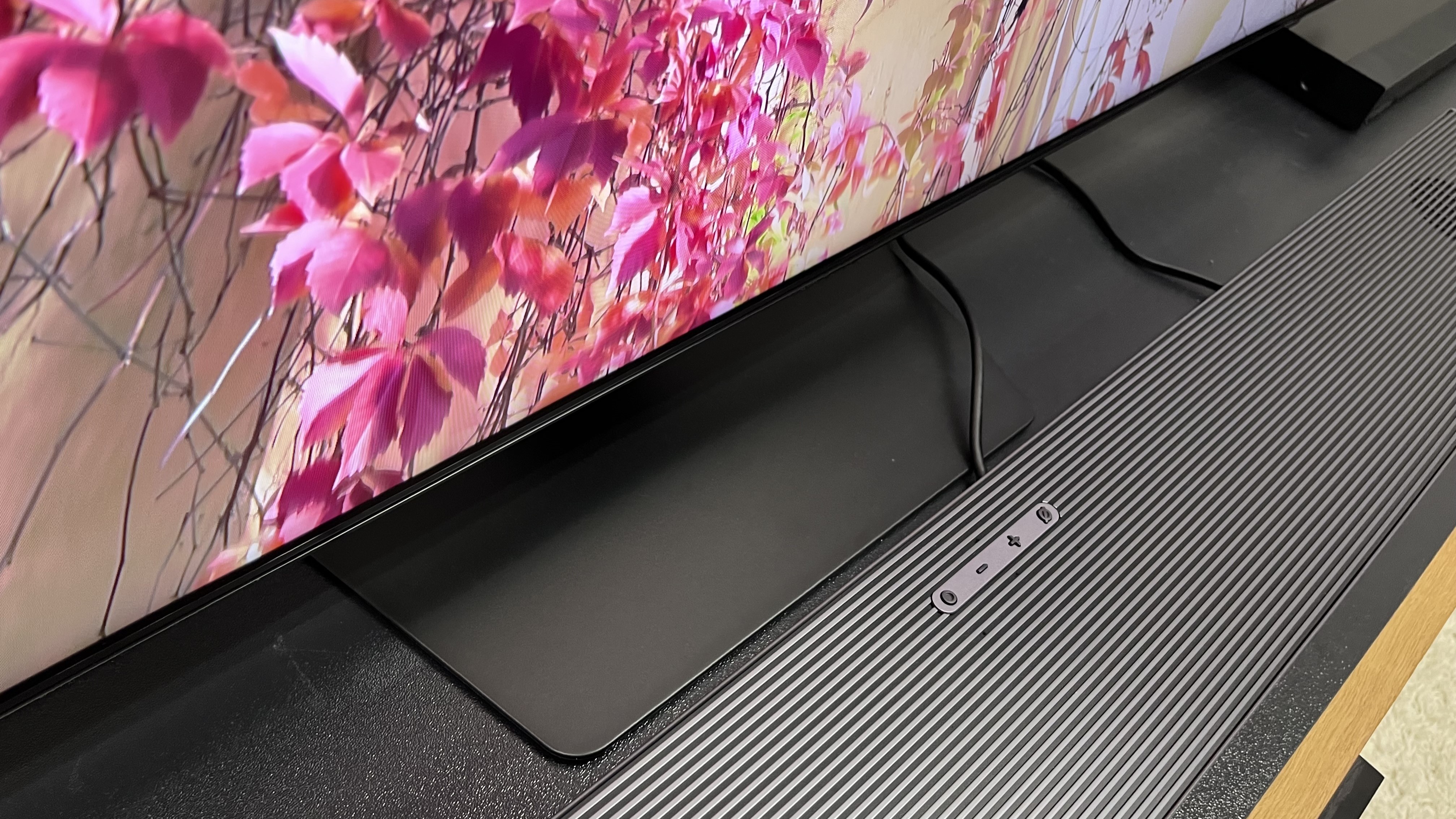
Hands-on with the QN90F
My measurements of the QN90F indicated that the TV’s overall brightness was lower than its QN90D predecessor. It hit 1,915 nits peak HDR brightness (10% window) and 597 nits fullscreen brightness in Filmmaker Mode, and in Standard mode measured 1,334 nits peak and 680 nits for fullscreen. Those are still very impressive results and ones we’ve come to expect from the best mini-LED TVs.
Color space coverage for the QN90F measured 93.5% for UHDA-P3 and 76.3% for BT.2020. That UHDA-P3 result is similar to what I measured on last year’s Samsung QN90D, though the BT.2020 one is notably higher.
Input lag on the QN90F measured with a Leo Bodnar HDMI Input Lag Tester at 4K 60Hz was 9.5ms in Game mode – a typical result for Samsung TVs, which regularly rank among the best gaming TVs.
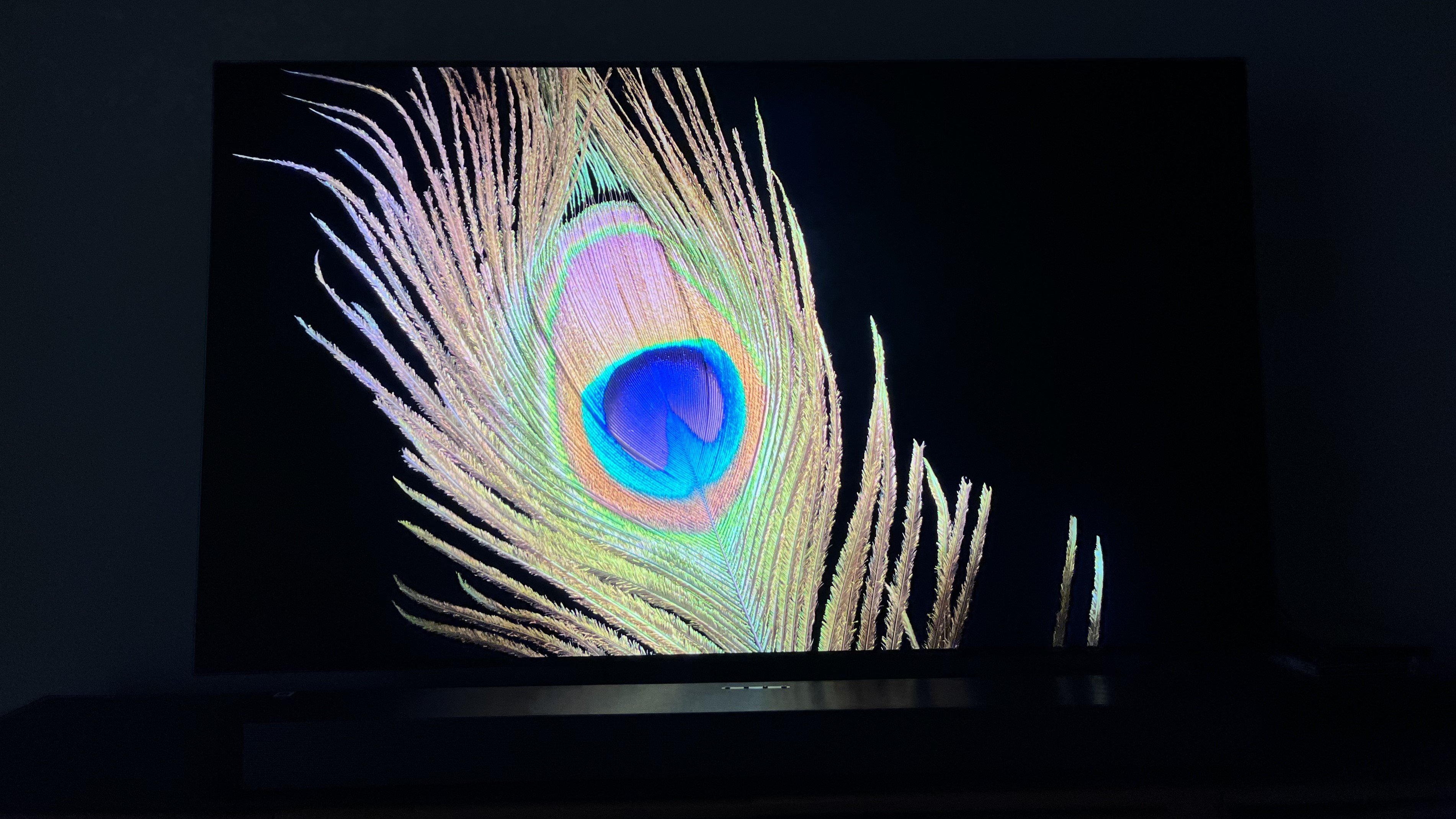
While I conducted measurements in Filmmaker Mode on the QN90F during my hands-on testing, I used Movie mode for most of my subjective viewing. That was mainly because Movie provided a brighter and more punchy-looking picture than Filmmaker Mode.
The picture in Movie mode also held up much better when viewing darker content with overhead lights on, The same images in Filmmaker Mode looked flat and devoid of shadow detail – a situation I suspect is due to the TV’s Glare-Free screen, since I noted the same issue when viewing with the Samsung QN990F mini-LED and Samsung S95F OLED, both of which also feature Glare-Free tech.
With the lights dimmed, the QN90F’s picture displayed excellent contrast and detail, with bold, rich colors. Backlight blooming was also impressively minimal, with high contrast images showing virtually no halo effects on black backgrounds.
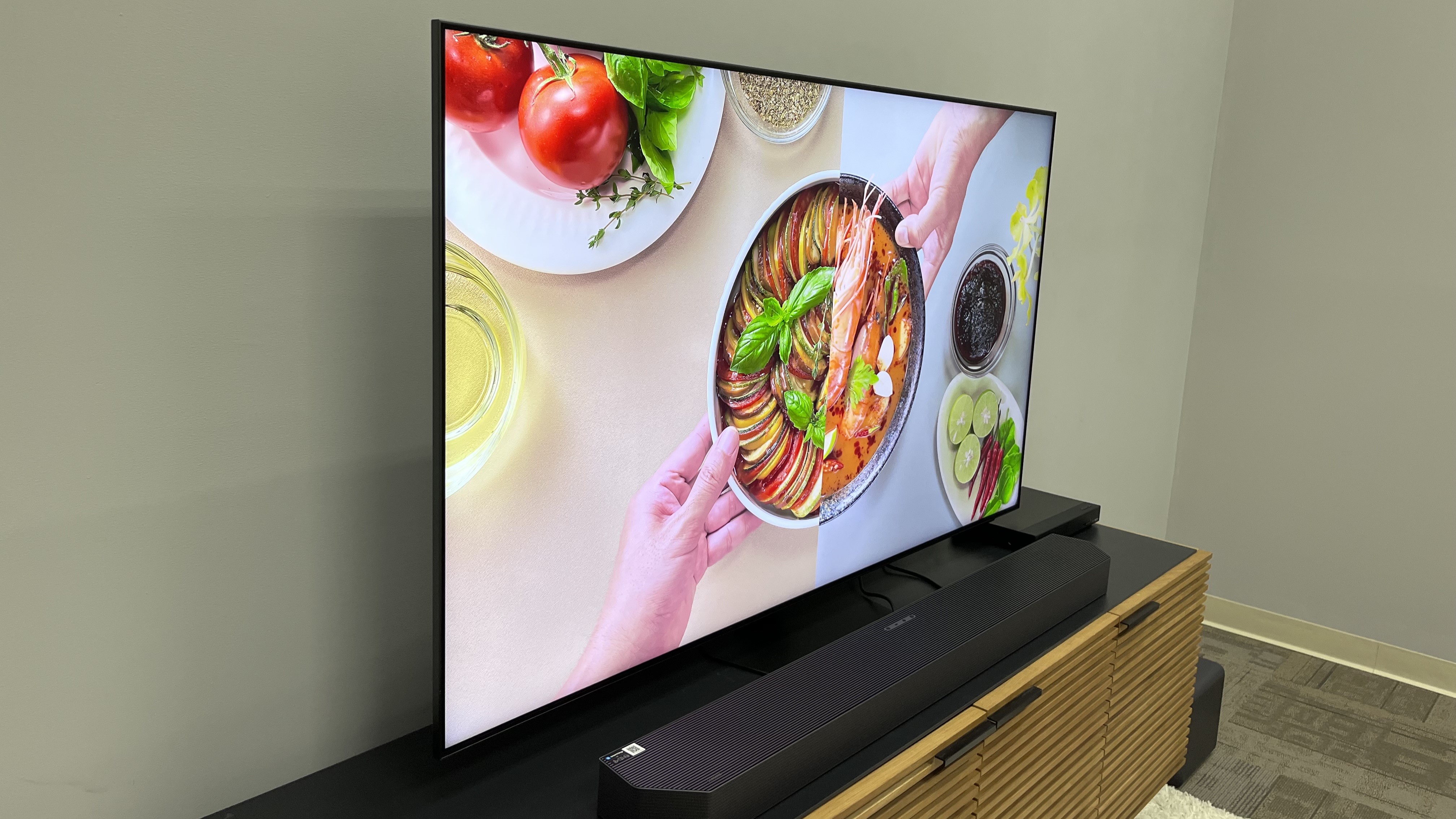
Not everything was perfect: there was some contrast fade when viewing from an extreme off-center seat, and a quick look at a reference scene from the James Bond film No Time to Die revealed a degree of judder and motion blur, both of which could be reduced using the custom settings in the Motion Clarity menu.
But otherwise, the QN90F met my picture quality expectations for a flagship Samsung mini-LED TV.
Between Glare-Free tech, AI Upscaling Pro, and other AI picture processing features, the Samsung QN90F is a strong upgrade over last year’s QN90D, which was itself a fantastic TV. Other new features like the Samsung Art Store and 165Hz support make it that much more compelling.
I look forward to getting a QN90F in for a more comprehensive review, but from my initial hands-on test, it’s looking to be the flagship 4K mini-LED TV that I expected.
You might also like...

Al Griffin has been writing about and reviewing A/V tech since the days LaserDiscs roamed the earth, and was previously the editor of Sound & Vision magazine.
When not reviewing the latest and greatest gear or watching movies at home, he can usually be found out and about on a bike.
You must confirm your public display name before commenting
Please logout and then login again, you will then be prompted to enter your display name.